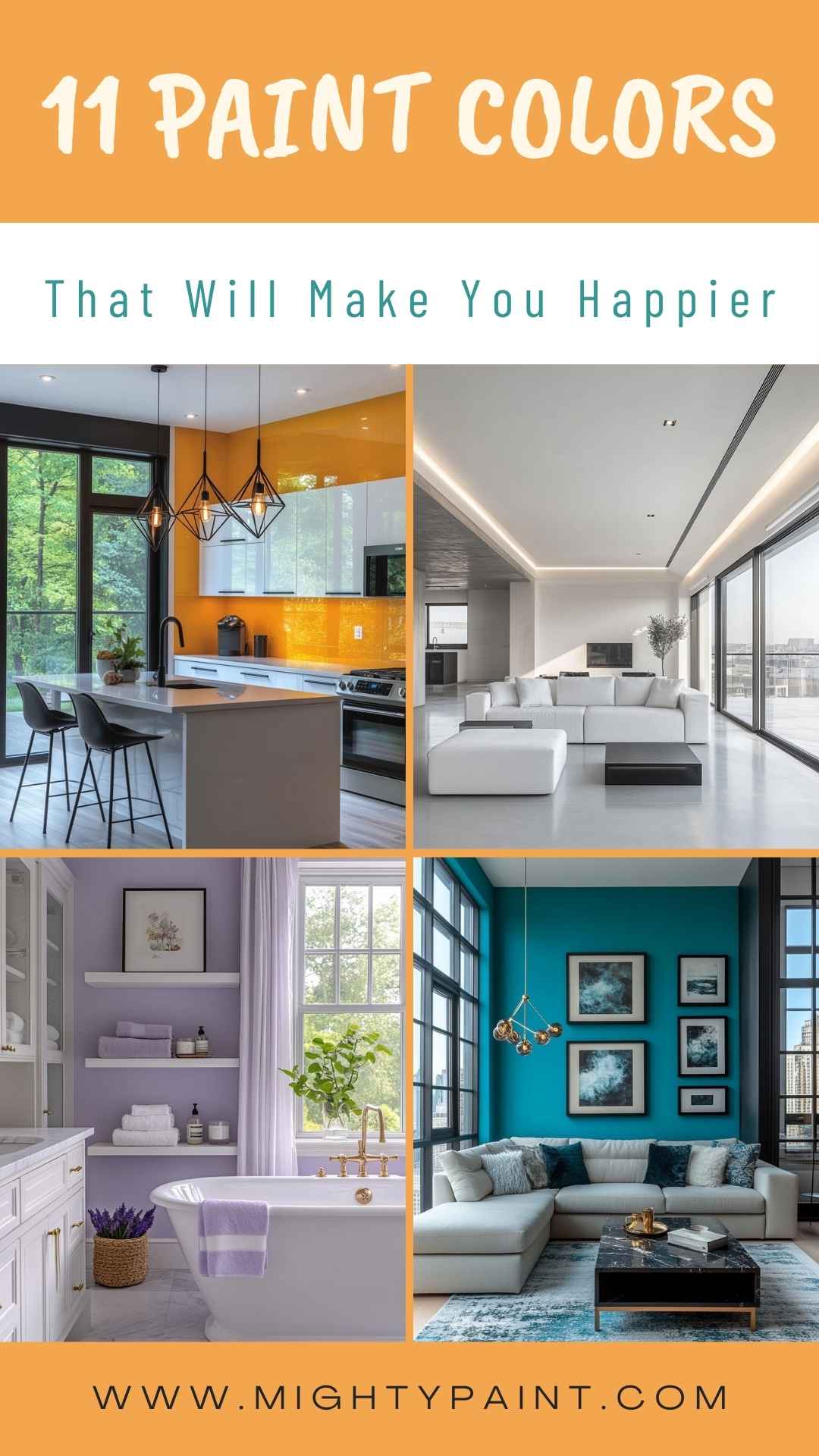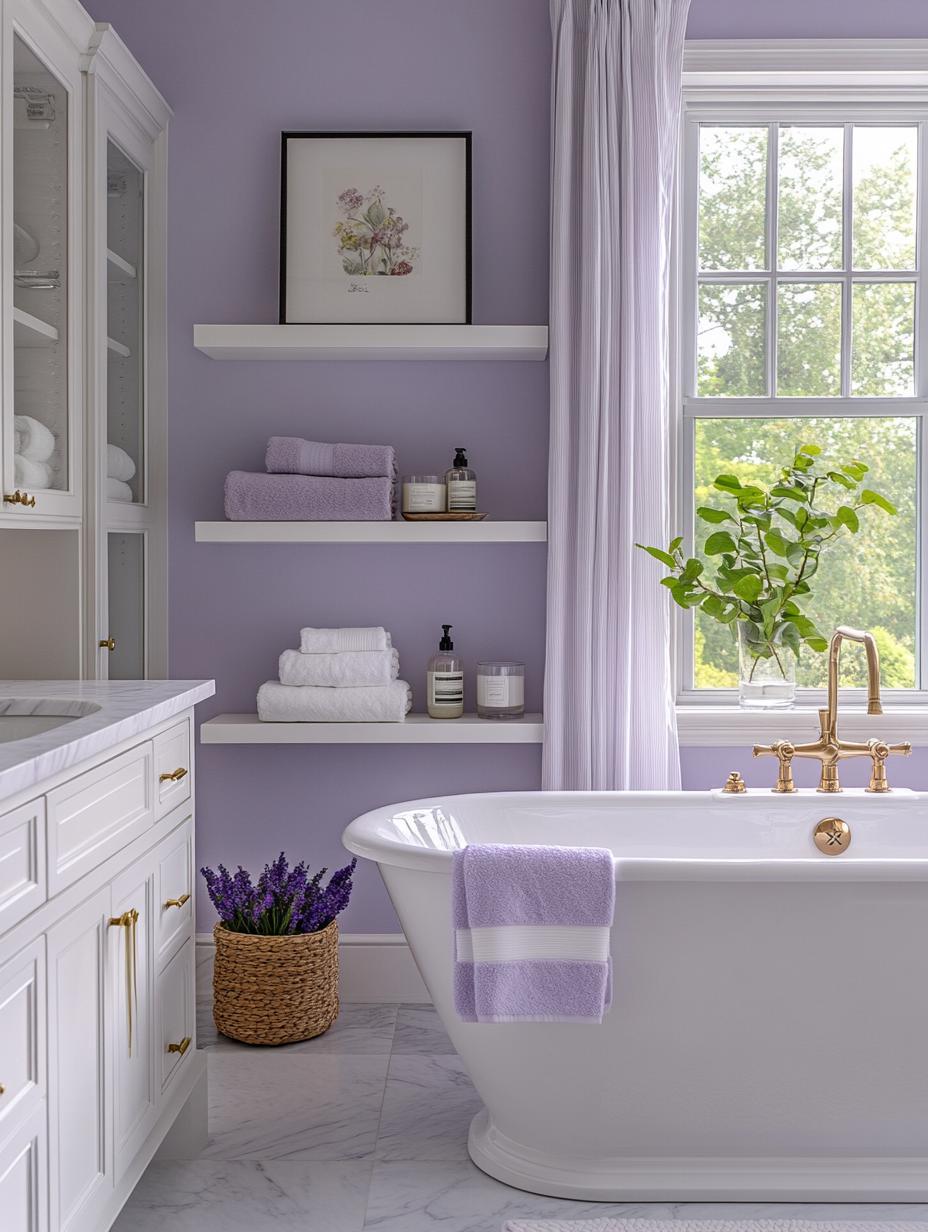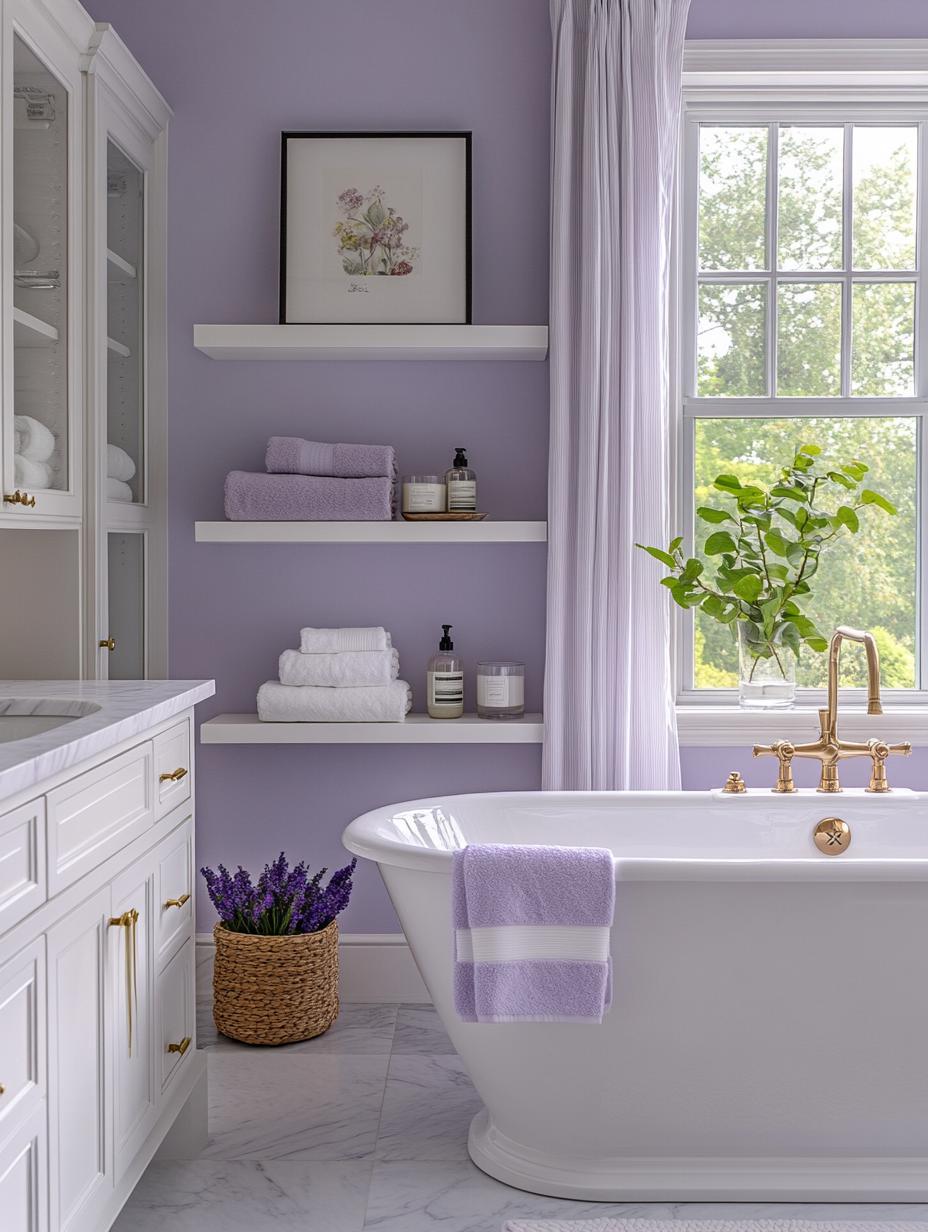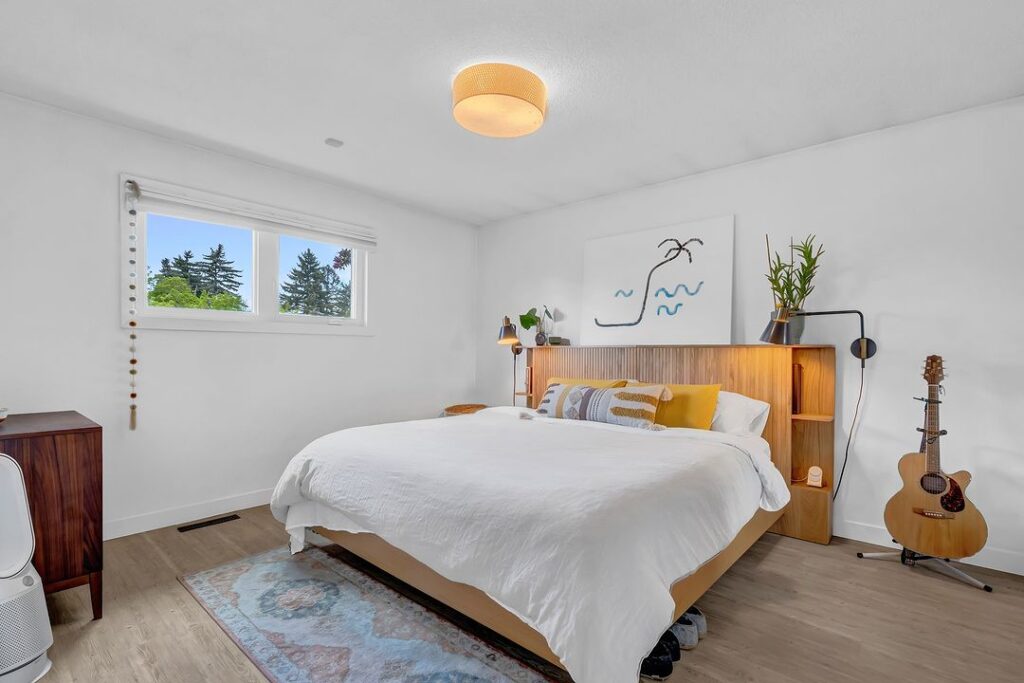11 Paint Colors That Will Make You Happier: Transform Your Space with Joyful Hues
When creating a joyful and uplifting environment, your choice of paint color can make all the difference. It’s fascinating how colors affect your mood and energy levels. Have you ever walked into a room and immediately felt happier just because of the walls around you? Certain colors are known to boost your mood and transform your living space into a place of happiness and comfort.

Choosing the right paint color is a unique journey because everyone’s happy shade might be different. Some people find joy in bright yellows, while others feel more content with calming blues or gentle pinks. Whatever your preference, exploring how different colors can make you feel is a fun and creative way to enhance your home.
Get the Fail-Safe Paint Color Playbook (Free PDF)
36 proven colors • 8 ready palettes • trim & sheen guide • printable testing cards.
1. Sunny Yellow

Sunny yellow is like a burst of sunshine on your walls. Picture this: you walk into a room painted in a warm shade of yellow, and it instantly brightens your mood. Sounds inviting, right? That’s because this color can create a vibrant and cheerful atmosphere in any space.
Do you have a small kitchen or cozy breakfast nook? Trying a bold yellow paint in these spaces can add a playful touch. High-gloss yellow cabinets can give your kitchen a fresh and modern feel. Yellow is quite the charmer, offering both warmth and personality to a room.

Not sure which yellow to pick? Designers often recommend shades like Buzz-In from Behr or Citrus Punch from PPG. These warm yellows blend beautifully with natural elements, making them a fantastic choice if you love a rustic look.
Sunny yellow can also perfectly complement antiques due to its subtle umber undertones. It’s a shade that seems to welcome everyone with open arms, making your space more inviting. Whether you use it in a small corner or a larger room, the effect is blissful warmth.
2. Soft Peach

Soft Peach is a delightful color that can brighten up any space. Think of it as a gentle hug from your favorite blanket. It’s warm and cozy, making any room feel inviting.
You might be wondering, where can you use Soft Peach? It’s perfect for living rooms or bedrooms. This color works well with natural light, creating a soothing ambiance.
Pairing Soft Peach with other colors is a breeze. It looks amazing with soft greens, blues, and grays. Together, they create a balanced and harmonious vibe that feels both fresh and timeless.

For those who love a bit of contrast, try adding bold accents like navy blue or charcoal. This adds depth while keeping the serene feel intact.
Decorating with Soft Peach can bring a sense of happiness and calm to your home. Why not give it a try? Whether you’re painting an accent wall or an entire room, you’re sure to love the inviting feel it brings.
3. Sky Blue

Have you ever looked up at a cloudless sky and felt instantly calmer? That’s the magic of sky blue. This paint color brings that same serene feeling into your home.
Sky blue is gentle and soothing. It’s like a breath of fresh air on your walls. You’ll feel relaxed and happy whenever you walk into a room painted this shade.
If your space doesn’t get much natural light, sky blue can brighten it up. It reflects light well, making rooms feel airy and spacious. Plus, it’s a versatile color that pairs beautifully with whites and neutrals.

Thinking of adding a bit of fun to a child’s room? Try sky blue! It’s playful enough to make kids smile, yet calming enough to keep you relaxed. Sky blue is a top choice for nurseries and playrooms for this reason.
Get the Fail-Safe Paint Color Playbook (Free PDF)
36 proven colors • 8 ready palettes • trim & sheen guide • printable testing cards.
Consider using sky blue in your bathroom for a refreshing spa-like vibe. Paired with white towels and accessories, it creates a clean and peaceful space. It’s like having a mini retreat right in your home.
4. Mint Green

Imagine waking up in a room that feels like a breath of fresh air. Mint green can do just that. This color is soft and inviting, making any space feel relaxing. It’s like having a piece of nature right in your home.
Do you want your kitchen to feel clean and fresh? Mint green on the walls can make a small space feel bigger and more vibrant. Pair it with white or light gray for a sleek, modern look.
In living rooms, mint green can be a soothing backdrop. It connects beautifully with light wood tones and plants, creating a space that feels both lively and calm.
Thinking about the bedroom? Mint green is perfect here too. When used with soft textures like cotton and linen, it creates a comfy, welcoming sanctuary. You can even add pops of gold or copper for that extra touch of elegance.
If you want your mint green to really stand out, use it with bold patterns or darker greens for a bold contrast. This can make your space feel creative and unique. Plus, it’s versatile, fitting almost any style from modern to vintage.
5. Coral Pink

Did you know coral pink can make your room feel warm and inviting? This color is like a great sunset, adding a touch of happiness to your wall. It combines the gentle tones of pink with a subtle hint of orange.
Coral pink is a versatile shade that brightens up spaces, making them feel open and friendly. It works well in different rooms, whether it’s a bedroom, bathroom, or living room.
By choosing coral pink, you can give your room a light, cheerful look. This color blends well with other muted colors, like seafoam green or a washed-out grey, creating harmony in your home.
6. Lavender

Lavender isn’t just for your grandma’s garden—it’s a color that can truly uplift your mood! Imagine walking into a room painted in a delicate shade of lavender. Right away, you might feel calm and relaxed. This color is known to create a tranquil environment, perfect for unwinding after a long day.
Are you wondering where to use lavender? It works wonders in a bedroom or bathroom. These are spaces where you want to feel peaceful, and lavender does the job beautifully. Plus, it pairs well with both bold and neutral colors, giving you lots of decorating options.
Get the Fail-Safe Paint Color Playbook (Free PDF)
36 proven colors • 8 ready palettes • trim & sheen guide • printable testing cards.


Ever thought about combining lavender with red? It might sound unusual, but this combo can create a striking look. Inside scoop: designers love lavender because of its versatility. Whether you’re aiming for a playful or elegant vibe, there’s a lavender shade that’s perfect for your space.
7. Turquoise

When you’re dreaming of a splash of happiness for your walls, consider turquoise! This charming color blends the calm of blue with the energy of green. It can instantly transport you to a sunny beach, filling your space with a sense of tranquility and joy.
Turquoise is like a cool ocean breeze. It’s great for adding a fresh vibe to any room in your house. Whether you’re painting a cozy bedroom or a lively living room, this color is sure to uplift your spirits.

Dreaming of a creative touch? Turquoise pairs well with white, sandy beige, or even coral accents. It offers flexibility whether you’re aiming for a coastal theme or a bohemian flair. Imagine how it could brighten up your kitchen or bathroom!
Some people use turquoise to inspire creativity. It can spark ideas and bring out innovative thinking. Try it in a home office if you’re looking to boost your imagination and motivation. Enjoy the inviting and happy feeling it creates as you go about your daily tasks.
8. Pale Orange

Ever thought about giving your walls a soft kiss of color? Pale orange might just be your new favorite! It’s like a warm embrace, bringing a gentle glow that brightens any room.
Why choose pale orange? Well, it creates a cozy, welcoming atmosphere without shouting for attention.
Pale orange works well in many spaces. From a soothing bedroom to an inviting living room, this shade can fit right in. It pairs beautifully with soft blues, gentle greens, and even neutrals. Think about mixing it with light woods or white accents for a fresh look.

If you’re worried about it being too bold, pale orange isn’t the intense citrusy hue you might imagine. It’s softer and more subtle, making it versatile. This shade can make you feel uplifted and happy without being overpowering. So, why not give your home a cheerful makeover?
Get the Fail-Safe Paint Color Playbook (Free PDF)
36 proven colors • 8 ready palettes • trim & sheen guide • printable testing cards.
9. Light Grey

Light grey paint might just be the cheerful vibe your room needs. Why? It’s versatile and goes well with almost anything. You can mix it with bolder colors or keep it neutral.
Not all greys are the same. Some have warmer tones, like greige, which is a mix of grey and beige. Others are cooler and crisp, offering a modern edge.
Imagine a living room with light grey walls and bright yellow accents. Feels cozy and chic, right? Light grey can adapt to your style, whether it’s traditional or modern.

When choosing a light grey, consider your room’s lighting. Natural light may make the grey look softer, while artificial light can change its hue. Don’t forget to sample a few shades before making a decision.
Does the idea of a room that feels both relaxing and stylish sound good to you? Light grey could be just the right choice. Whether it’s for a bedroom, living room, or even a kitchen, this color can transform spaces into happy places.
10. Blush Pink

Blush pink is like a gentle hug for your walls. It’s not too bold but just enough to lift your spirits.
Wondering where to use it? It’s perfect for bedrooms and living spaces where tranquility is key.
This color gently stretches into a softer realm than standard pinks. Less intense, blush pink brings a subtle warmth to any room. Designers love it for its soothing qualities and versatile nature. Not too flashy, but never boring either!

Imagine a sunny morning light spilling into your room painted in blush pink. Doesn’t that sound peaceful? This shade works well in natural light, enhancing its gentle, feminine air.
Thinking of other places to use it? Bathrooms and nurseries can also benefit from its soothing vibes.
Sherwin Williams Cosmetic Blush (SW 6616) is an example worth checking out. It combines classic pink with a hint of coral, offering a unique twist. This paint can add a pop of subtle color to your space. Give it a try and see how it warms up your home!
11. Pure White

Have you ever noticed how calming a pure white room can be? It’s like stepping into a sanctuary. Sherwin-Williams Pure White is a favorite for creating peaceful, neutral spaces.
This white has slightly warm undertones that can make your room feel welcoming and balanced.
Choosing the right white paint can be tricky. Some whites can appear too stark, while others might veer toward yellow. Pure White finds that sweet spot, offering a clean backdrop that enhances other colors in your space without feeling cold.

If you love a minimalist look or enjoy showcasing art and decor, Pure White can be your go-to. Its clean appearance makes it an ideal canvas. Your personal touches will stand out beautifully against this serene shade.
When you’re looking for a color that makes you feel uplifted and content, consider Pure White. It’s all about creating a sense of calm and simplicity. So, ready to transform your room into a tranquil escape with this versatile hue?
The Psychology Behind Color
Color isn’t just about looks; it’s a powerful tool that can influence how you feel. Let’s explore how different colors alter moods and the science that explains why this happens.
How Colors Affect Mood
Colors can significantly impact how you feel in a space. Yellow is often linked to happiness, while blue can bring about calmness or even sadness, depending on the shade.
It’s fascinating how these colors interact with our emotions! Think about a time you’ve walked into a room and felt an immediate change in your mood—it’s likely the colors at play.
Color psychologists believe colors like red can increase energy and excitement—great for a gym or lively kitchen. In contrast, green is soothing and can make a room feel refreshing as if you’re in nature.
Next time you want to relax, maybe think of softening your living space with calming greens or blues.
These tendencies aren’t just random. Cultural and personal experiences can tweak color perception. Your happiest color might be influenced by a favorite childhood place or an unforgettable trip. So, what’s your go-to hue for happiness?
The Science of Color Perception
Your eyes and brain are like a high-tech team when it comes to seeing colors. The millions of tiny cells in your eyes, called cones, detect color and send signals to your brain.
This process is super-fast, happening in a fraction of a second!
Ever wonder why some people like warm colors and others prefer cool ones?
It’s all about the light wavelengths that each color emits. For instance, reds have longer wavelengths, making them appear bold and in-your-face. Meanwhile, blues have shorter wavelengths and are often perceived as calming.
It’s not just about looks; it’s about how your brain registers these hues.
Get the Fail-Safe Paint Color Playbook (Free PDF)
36 proven colors • 8 ready palettes • trim & sheen guide • printable testing cards.
Lighting also plays a role. Colors can look different under artificial versus natural light.
Ever notice how a paint swatch looks different at home than in the store? That’s lighting in action.
When picking a color, think about where and when you’ll see it most. This deeper understanding helps you use color in a way that works for your mood and space.
Choosing the Right Paint Color
Picking the perfect paint color can transform your space and uplift your mood. It involves more than just liking a hue. Consider how it fits with lighting, furniture, and the room’s purpose.
Factors to Consider
Choosing paint colors is a balance of many factors.
Lighting plays a big role. A color might look different in natural light versus artificial light. You should observe how shades change throughout the day.
Room purpose is another important element. A relaxing blue might work well in a bedroom, while a cheerful yellow could brighten a kitchen.
Don’t forget your personal taste—your space should reflect what you love.
Also consider how the color matches existing furnishings and materials. This ensures a cohesive look. Testing a small section of your wall first can help avoid surprises later.
Common Mistakes to Avoid
Many pitfalls can occur when picking paint colors.
First, avoid picking a color without observing it in different lights. What seems perfect under store lights might be jarring at home.
Another mistake is ignoring the home’s existing color scheme. You want your paint to blend or complement, not clash.
Also, don’t forget to think about texture. Glossy finishes might highlight flaws, while matte can hide them but might be harder to clean.
Finally, rushing the decision is a mistake. Take your time to consider your options and ensure you’ve tested all your favorites.
Maintaining Your Painted Spaces
Keeping your painted spaces looking fresh and vibrant doesn’t have to be hard work. With a few simple tips for longevity and easy cleaning, your walls can stay beautiful for years. Let’s dive into the specifics, so you can extend the life of your painted rooms.
Tips for Longevity
To ensure your paint lasts as long as possible, start with quality paint and proper application.
First, always prep your surfaces by cleaning and sanding them. This small step makes a huge difference.
Consider using a primer. It helps the paint adhere better and can even out the surface.
Two coats of paint are often ideal. Thin, even layers minimize peeling and chipping.
Get the Fail-Safe Paint Color Playbook (Free PDF)
36 proven colors • 8 ready palettes • trim & sheen guide • printable testing cards.
Maintain good ventilation in painted spaces to reduce moisture build-up. Humidity causes paint damage, so using a dehumidifier in damp areas is smart.
Don’t forget to touch up small nicks or scratches quickly.
Cleaning and Care
Dust builds up on walls, making them look dingy over time. Regularly dust your walls with a soft cloth or sponge. For deeper cleaning, use a mild soap solution and avoid harsh chemicals.
Spot cleaning, rather than a whole wall wash, is often enough. Dab stains gently, rather than rubbing them. Pay attention to areas like corners and high-traffic zones.
Consider any furniture placed close to walls. Avoid scratching and scraping paint with protective pads. Finally, prevent direct sunlight from fading colors by using curtains or blinds.
